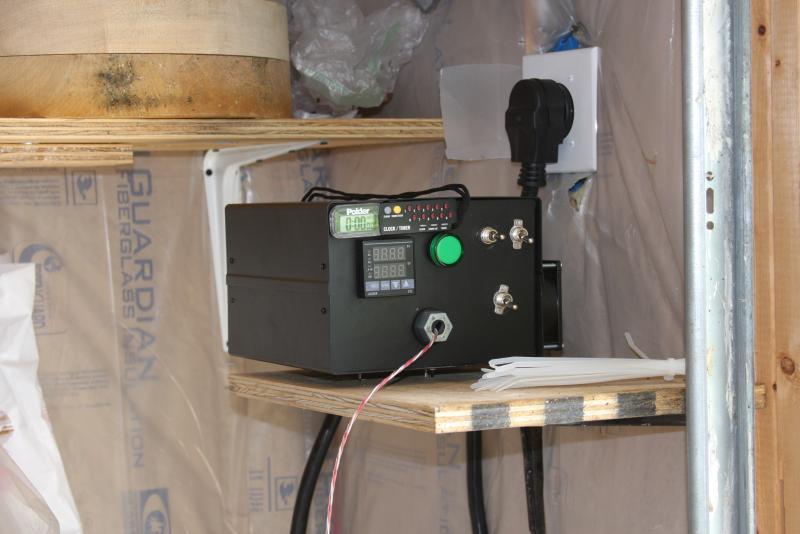CidahMastah
Well-Known Member
- Joined
- Nov 12, 2010
- Messages
- 4,201
- Reaction score
- 46
Looks like people like that oxyclean - you think PBW would do the trick as well?

Looks like people like that oxyclean - you think PBW would do the trick as well?
I'm not sure that you need on/off with the insulation.. I used clear packing tape to adhere the reflectix to my pot, it's holding up great and seems to be doing the job of holding heat in.
I spray the inside with a hose and the stuff is pretty waterproof so overspray beads up on it and I wipe it down with a towel. No need to remove the reflectix. I'm in CA, so 1 layer thick is already more than I need
Also, I'm fairly certain boilovers are a thing of the past (probably just guaranteed my next brew will boil over... ) I've got foam control for the 10G batches, and the 5G batches the heating element duty cycle control is so fool proof that I feel 100% confident not even paying attention during the boil other than to add hops, etc.
Hey Cidah, great build!
I'm using the same box for my build was wondering if you had any completed pics of the box with the fan installed? Also I couldn't find anything specifically mentioning how you mounted things (DIN rail, heatsink, etc) to the box, could you clear that up?
Thanks,
Sam





Thanks Cidah, as soon as I get some more toys this week I'll be starting to post updates in my build thread. One last thing, did you incorporate any type of strain relief or grommet where your supply wires enter your enclosure to prevent any damage?
That is a strong indicator that you have a water leak into the back side area of the element. I think you have found the source of the problem....
No leaking water anywhere, though the connection screws to the element were corroded.
...
That is a strong indicator that you have a water leak into the back side area of the element. I think you have found the source of the problem.
How do you have the element mounted and wired? The reason I'm asking is that it is very possible that the problem is in the connections to the element.
An example: A friend had the same thing happen to him. His element was wired with crimp on terminal lugs between the wire ends and the element terminal block. This was all housed in an electrical box mounted to his keg. He got several brew sessions done and then ran into the same problem.
The end happenstance was that the crimp on lugs presented some resistance to the element current and over time this caused the connection to heat up. The more he use it the more it heated until the point of failure. When it failed, the wire/lug connection was burned through.
In his case, the solution was to restrip the end of the wire and reapply new terminal lugs - but - this time he also soldered (electrical solder) the lug/ wire connection. He's still brewing with it that way without issue. This happened several years ago - BTW.
You might want to take a look.
Edit for more thoughts: You might want to test the wiring with an ohm meter. This will help you locate the fault.
First thing is to determine if that is the point of failure. Can you meter it?
If you have the element, just meter it. You don't need to rewire it. If it is open you will know in a few seconds. If it shows about 12 to 13 ohms, the problem is not the element but something else.
I'd say crimp and solder. You could also use the bare copper wrapped around the terminal, but if the wire is stranded, I'd solder it to bond the strands at the end. That way you have a strongly bonded current path.
None of this would matter with a low current draw application. The current draw that we experience in an environment that is hot to begin with changes things a little bit. in any case, I'd do it just for peace of mind.
Enter your email address to join: